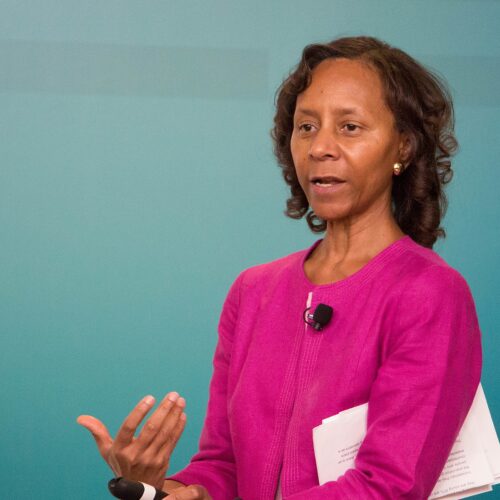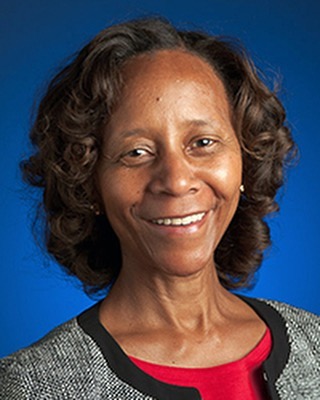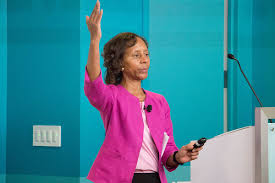
Did you know that the person who pioneered the technology we use for internet calls is a woman by the name of Dr. Marian Croak?
She is currently the Vice President of Engineering at Google and holds over two hundred patents, including over one hundred related to Voice over Internet Protocol (VoIP). This makes me feel like I’m lazy…
Before joining Google, Marian had an extensive career working at Bell Laboratories and AT&T.
Born in 1955, Marian grew up in New York and was intrigued by how things worked. As a child, she would often hear her mother summon her father when something in the house was broken. Then she would watch her father tinker with whatever gadget wasn’t working and then eventually call a technician to come and fix it.
When they arrived, Marian would follow them around the house and observe as they meddled with wires. She was particularly fascinated with how the plumber would listen for the sound of water as he worked on the pipes in her home. The act of tampering with wires in order to make something work captivated Marian. In fact, she thought she would one day become a plumber.
Marian asked a barrage of questions and one day hoped to be the person her mother would call to fix something that was broken.
It was this interest in solving problems that took her to greater heights than the aspirations of her childhood.
Now let’s pause for a moment to consider something…can you imagine what would have happened if Marian’s parents had told her to mind her business and stop disturbing the men at work?
At the time, they probably had no idea who she would later become, or that she would be a great inventor one day. What if they had told her to mind her manners, be more of “a girl,” and that fixing things was a man’s job?
Hmm…
Anyway, back to Marian’s story…
She attended Catholic School for the majority of her childhood but decided to switch to a public school, which her father initially did not approve of. He felt she was opting for a second-class education. However, Marion stuck to her guns and ended up meeting the most stimulating teachers who encouraged her to pursue STEM. Her father was relieved.
She went on to attend Princeton University, and then afterwards, moved to California to study and earned a Ph.D in quantitative analysis and social psychology, which proved to be a winning combination that helped her understand how technology could be used to enhance people’s social lives.

In the infancy of the internet, Marion saw a great opportunity for digital telecommunications. At the time, she was working for AT&T and leading a team that was working on Internet Protocol (IP) technology. The company had invested billions of dollars in ATM technology that she did not think was as promising as developing VoIP for the internet.
“It became clear to us that the internet was going to win the day,” Marian said during her keynote address at the Women’s Techmakers Mountain View Summit 2017.
The execs thought she was wrong. The internet was a toy and people would get tired of it soon, they argued. Marian stuck to her belief.
“We started to study and explore until it became clear that the internet was going to win the day. It was open, it was flexible, it was multimedia…and there was a growing ecosystem that was developing around it. So, we did a lot of exploration, we do a lot of prototyping and a lot of invention to make it resilient, because in all honesty, it wasn’t a resilient protocol,” she said during her speech.
Part of the challenge was that the internet was not ready to support the technology her team was developing. It was an experiment that was going to be very costly, but Marian felt strongly that the VoIP technology would explode one day.
There’s a lesson here in believing in your ideas even when others can’t see the vision. Being a petite, introverted, soft-spoken woman of colour in a male-dominated field could not have been easy. She had to find the courage to get all of these powerful voices to listen to hers…
Marian’s team continued to work until she was able to convince the executives that she had something invaluable on her hands. Reluctantly, they began to believe in her idea.
“We finally convinced ourselves that IP could be made to carry mission critical information, so we had to convince the senior executives to turn from what they had been looking at in terms of ATM and reconsider and think about the internet. We found some allies in high places and through a lot of blood, sweat and tears, finally convinced the senior executives at AT&T to reinvest their multibillion dollars from ATM technology to the internet. It was a big, big bet,” she explained to the audience.
As she got more nods of approval, Marian realized that she needed to adjust her thinking to be able to pull off this great invention.
“I realized that I really had to change my ways because I was a big denier. That was my defense mechanism…that just simply meant that I stayed optimistic and I hoped for the best and that things would turn out well, but I realized this time that that was not going to serve me well in this situation. Because the truth was that the internet wasn’t quite ready to accept all the traffic,” she told the audience.
Another challenge Marian faced was that the two teams she was working with – the IP team and the voice networking team – were extremely opposed to each other. Effectively leading the operation meant that she needed to merge the IP team and the voice networking team because both needed to work together to build the technology. She had to find a way to bridge the gap.
“That was like a nightmare, these teams were really quite different from each other. The IP team was fast to market, prototyping everything… very quick deployment, were friendly with customers, ready to try out new technology, willing to accept things that had bugs in them and if something worked once, [they were ready to] just put it out. So they were a great team, very fast and fun to work with. The networking team, on the other hand, was very methodical, very careful, tested things endlessly, making sure that things had almost five nines of reliability before they would ever be released to the field. Very slow in their approach but very good as well…these were the two teams that we had to work with,” she said during her speech.
It took two years of identifying the strongest people from both teams to finally come up with the dream team.
And that was a game-changer.
VOIP has allowed people to communicate in ways they had never imagined before – through the internet that many argued would not be around for long.
“I realized that we had two notions at the same time: Yes, internet was going to win the day and it was the right thing to do to put all the investment there, but at the same time, it wasn’t ready and it wasn’t really resilient and it was going to crash and then we could ruin the brand. So we had those two facts together at the same time. Believe me, we worked really, really hard – a lot of invention – and we finally got it to work, and we finally got it to work very well,” she said to the audience.
By the time she left AT&T (after 32 years), about 95 percent of AT&T’s traffic was going over an IP network – an enormous accomplishment indeed.

Now Marian works for Google and leads an engineering team that works to make sure Google and YouTube systems run smoothly. In addition, she has worked on Project Loon, which is Google’s Network that extends internet coverage to remote areas when disaster occur in places where internet is not available.
Marian was inducted into the Women in Technology Hall of Fame in 2013, and was elected as Vice Chair of a technology development organization called ATIS.
In 2014, Marian was honoured for “Outstanding Technical Contribution – Industry” at the 28th annual Black Engineer of the Year Awards (BEYA) Science Technology Engineering and Mathematics (STEM) Conference in Washington, D.C. Later that year, she was listed in the Most Influential Women in Wireless list by FierceWireless.
So many lessons from Marian’s groundbreaking inventions. I encourage you to listen to Marian’s full keynote address below:
Vimbai E. is a content marketer, ghostwriter, and the founder of The Weight She Carries. With hundreds of articles and stories publishing online, in print and for broadcast, her love of language and storytelling shines through every piece of writing that bears her name.
